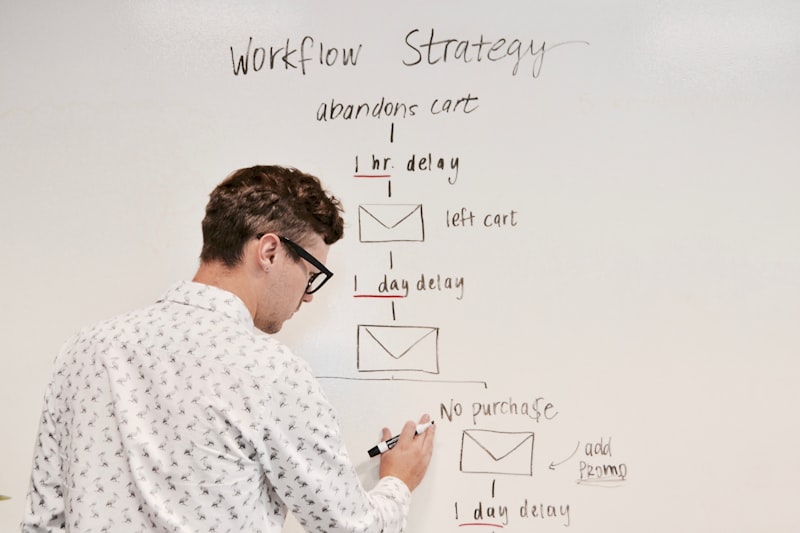“Craft the journey first, then deploy the tools. Clear objectives, granular triggers and metrics tied to subscriber value are foundations of efficient automation.”
Email marketing remains one of the most effective digital marketing channels for travel brands. With open rates in travel and hospitality averaging around 20% and click-through rates around 2-3%, email convincingly outperforms most social media platforms.
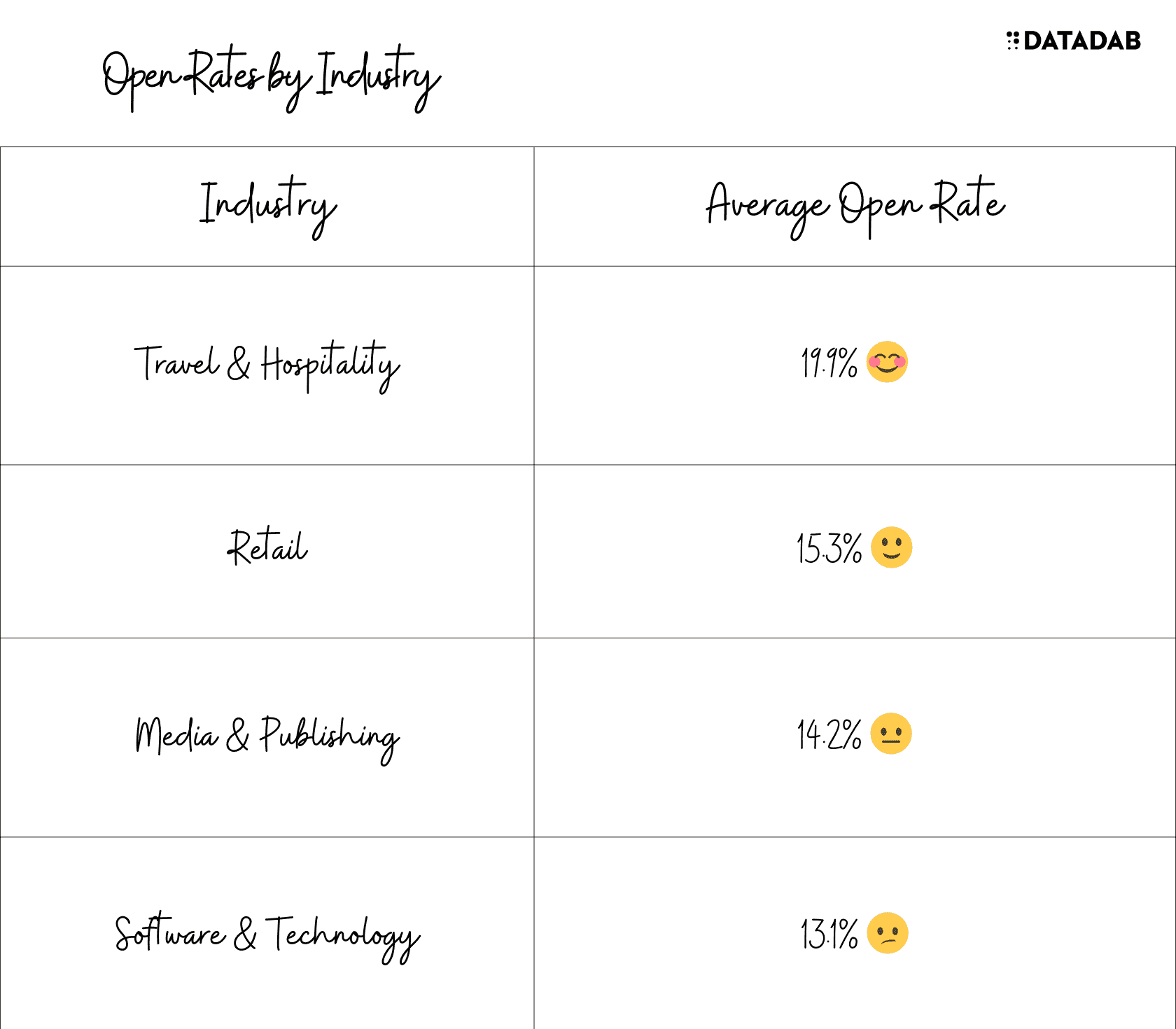
What’s more, email boasts one of the highest conversion rates amongst digital channels and delivers $42 in revenue for every $1 spent.
For travel companies looking to drive direct bookings, increase customer lifetime value, and build brand loyalty - an optimized email marketing strategy is essential.
This guide will explore practical tips and strategies to create compelling, segmented campaigns that cut through the noise and deliver results.

Crafting the Perfect Subject Line for Travel Emails
Your subject line is the first touchpoint to engage or lose a subscriber. With inboxes more crowded than ever, a compelling subject line is critical.
Examples of Effective Subject Lines
Good travel email subject lines pique curiosity, convey value, and speak to the target audience. Some examples:
- Top 5 Family Adventures This Summer Under $100
- 3 Romantic Sunsets the Maldives Has to Offer
- A Sneak Peek at our Brand New Eco-Lodge!

Tips for Creating Attention-Grabbing Subject Lines
Keep it short and scannable - Stick to 6-10 words maximum. Front-load key information.
Communicate value – Highlight what’s in it for them - savings, experiences, convenience.
Leverage exclusivity – Offers just for members create urgency to open.
Utilize open loops - Unresolved headlines that compel further reading work well to pique interest.
Test, test, test! - A/B test multiple subject line options and analyze open rates.

The Anatomy of an Engaging Travel Email
Beyond an excellent subject line, the content and structure of your email itself is vital.
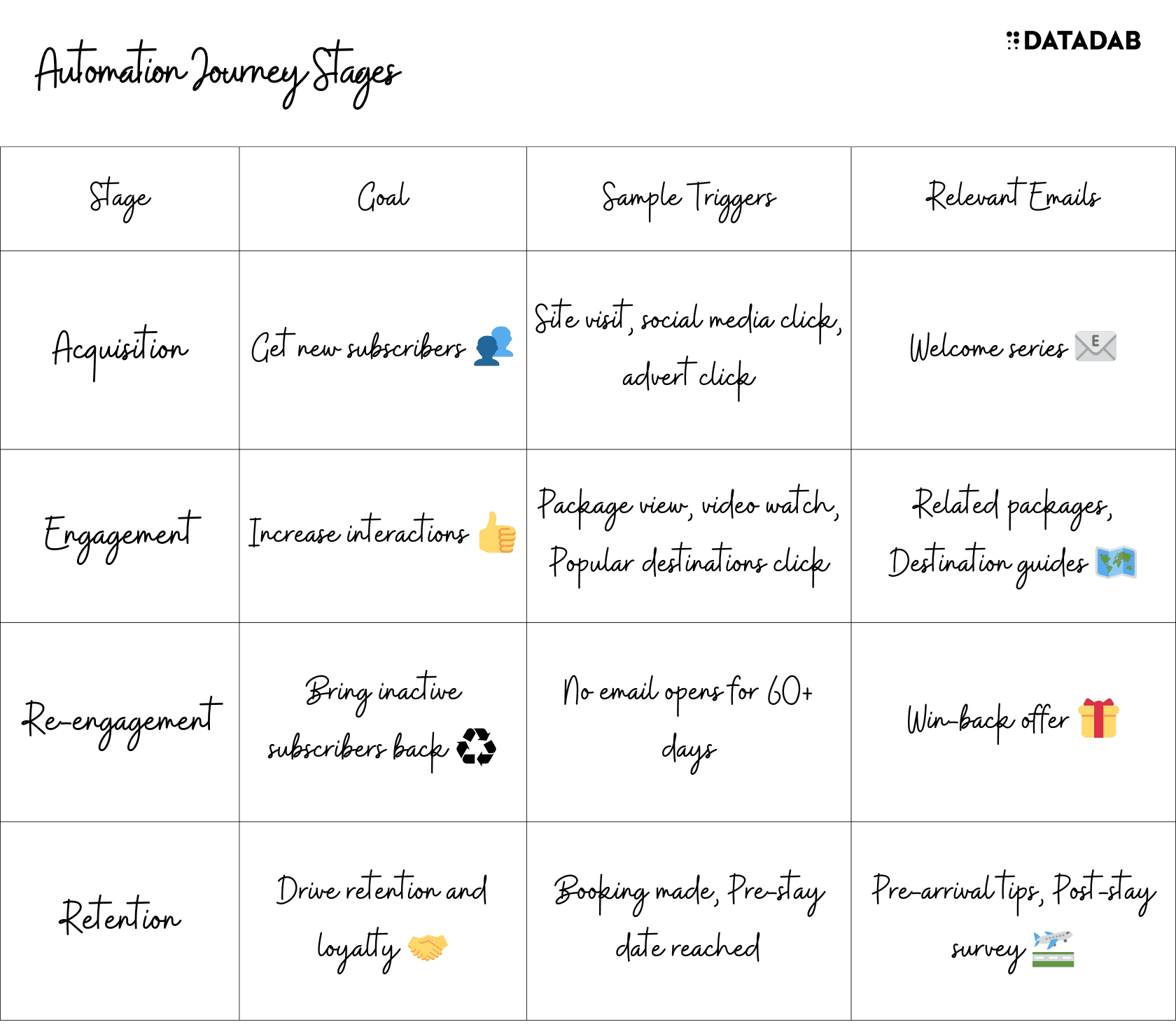
Structuring Your Email for Maximum Impact
Lead with the most critical CTA - Place your most important call-to-action front and center. Reinforce it throughout the body copy.
Funnel journey - Take subscribers on a journey, building intrigue before presenting an offer.
Social proof - Weave in metrics, testimonials and peer recommendations to build trust.
Clear formatting - Chunk content into scannable sections with plenty of whitespace between elements.
Incorporating Engaging Content and Call-to-Actions
Dynamic images - High-quality, on-brand images grab attention while conveying key messages.
Video - Videos can boost open rates by up to 300% and click-through rates by 200-300%. But ensure they are relevant and concise.
Calls-to-action - Buttons, links, and clear directional text should encourage specific user actions aligned to campaign goals. Test contrasting colors.
Personalization - Dynamic fields like first name, past purchases, or special occasion dates make emails more relevant.
Stimulate senses - Trigger emotional responses by describing experiences through vivid sights, sounds, tastes.
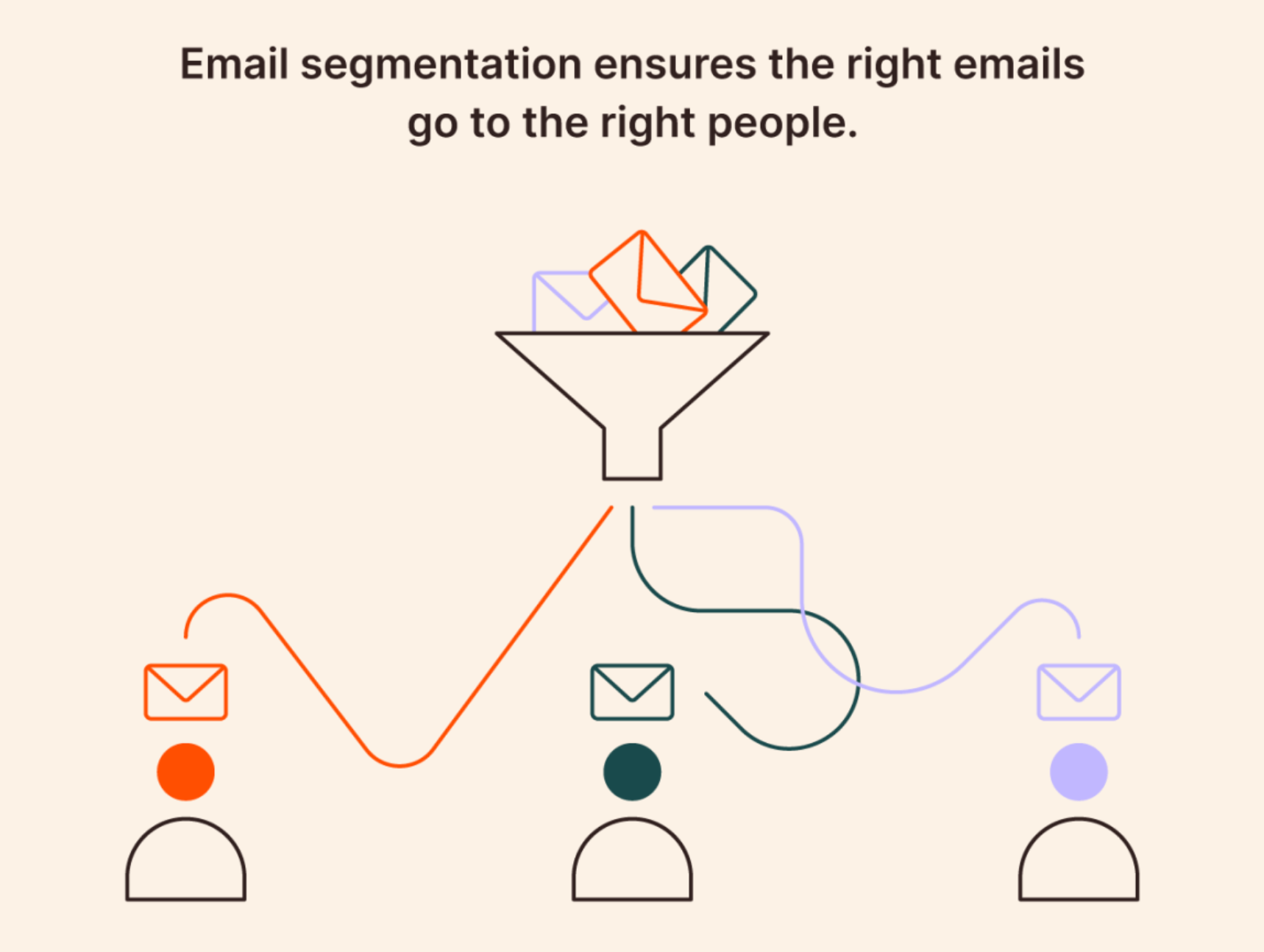
Segmenting Your Email List for Targeted Campaigns
With a more personalized experience expected than ever, targeted email campaigns focused on demographic or behavioral attributes convert better.
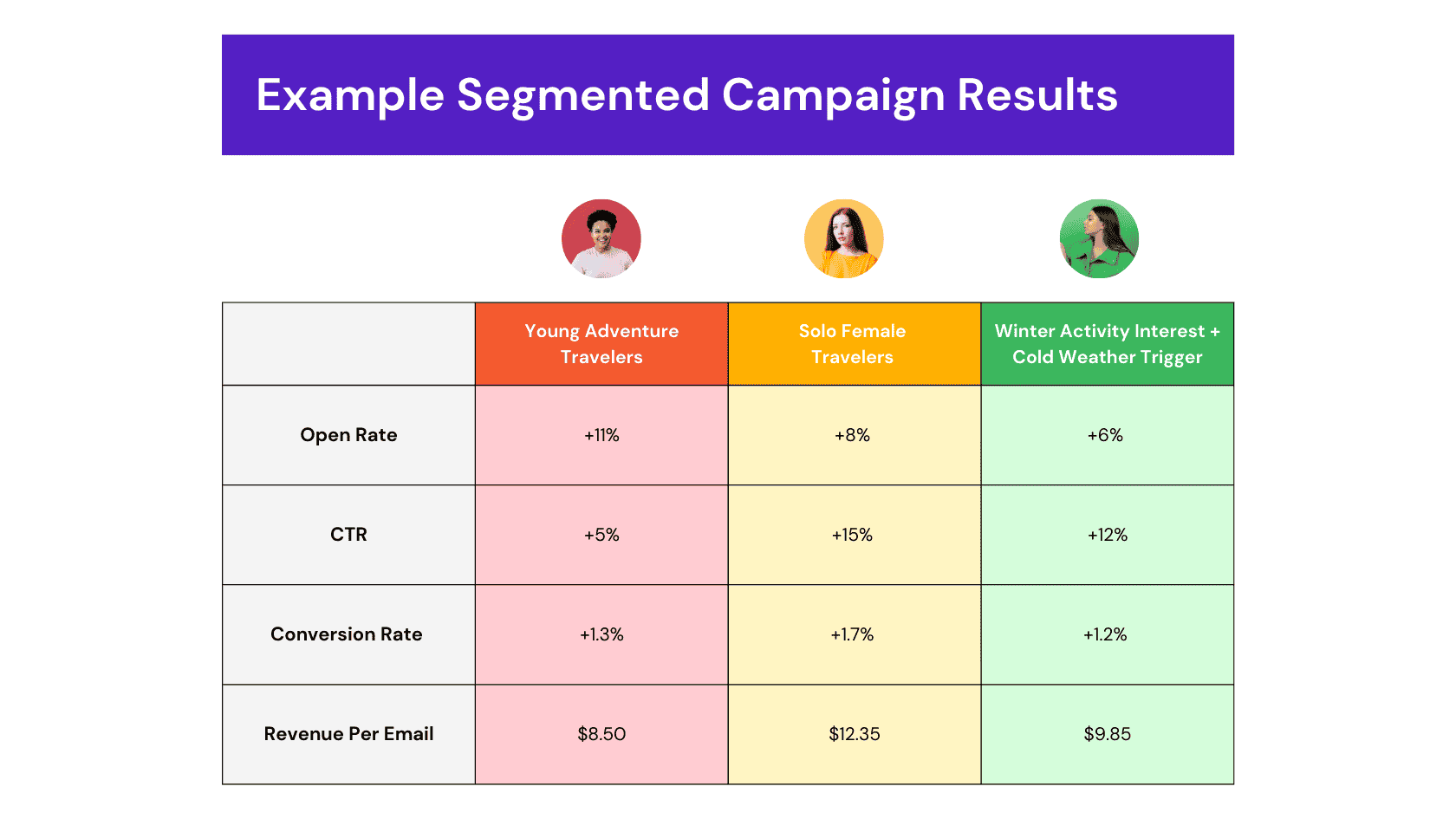
Strategies for Effective List Segmentation
Demographic splits - Send tailored messages based on age, gender, geography, language, interests and more.
Engagement segmentation - Create VIP groups for your most engaged subscribers and win-back campaigns for inactive emailers.
Behavioral segmentation - Tailor emails based on past on-site behaviors - from new users, to repeat customers, to those who recently abandoned carts.
Predictive segmentation - Leverage data like frequently visited routes to deliver hyper-personalized recommendations.
Case Studies: Successful Segmented Email Campaigns
- Online travel company TourRadar targeted younger adventure travelers with emails promoting fast-paced group tours off the beaten track. Open rates increased 11% against a non-segmented campaign.
- Luxury travel provider Secret Retreats crafted tailored emails that spoke to solo female travelers versus families. As a result, CTR’s doubled, and conversion rates saw a 1.7X lift.
- Destination Canada combined weather data with user interests. Subscribers were served winter activities if colder temps were headed their way that week - timing that correlated with a spike in CTRs.
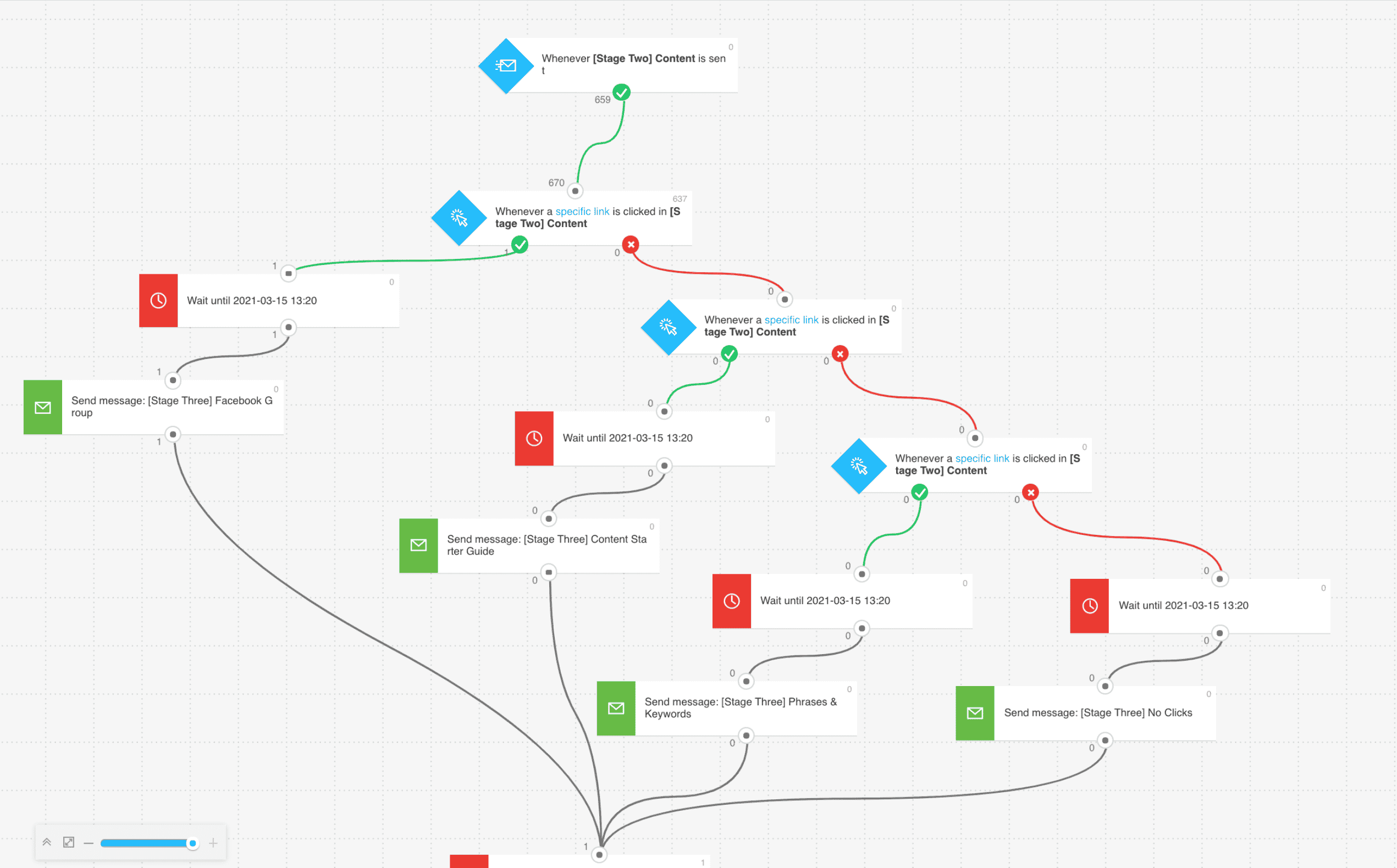
Automation in Travel Email Marketing
Marketing automation takes segmentation further by delivering personalized, behaviorally-triggered emails based on each subscriber’s real-time actions and preferences.
Tools and Techniques for Effective Automation
Welcome series - New subscribers receive a pre-set sequence over days or weeks to nurture the relationship.
Cart abandonment - Send timely reminder emails if a booking is initated but not completed.
Post-stay surveys - Request feedback immediately after a guest’s stay while the experience is fresh.
Lookalike audiences - Identify website visitors resembling existing email list members to expand reach of top-performing campaigns.
Site behavioral triggers - Send emails based on specific on-site interactions like viewing a particular travel package, watching a destination video, clicking an advert etc.
Setting Up Trigger-Based Email Campaigns
The first step is to define your marketing automation goals and the customer journeys you want to optimize - from acquisition to retention and more.
Next, map out the key triggers or behaviours that indicate someone is entering a stage you’d like to respond to with a relevant email.
Finally, createTimely and personalized content for each scenario and set up your automation workflow to deploy the matching email to users who satisfy the specified triggers.
Be sure to closely monitor performance and continuously optimize.
Staying Ahead in Travel Email Marketing
As saturation increases, standing out in subscribers’ inboxes requires an obsessive focus on delivering hyper-relevant value through email.
Leveraging segmentation, personalization and marketing automation based on holistic customer data can help cut through the noise for resonant messaging.
Equally vital is continually testing content variations plus optimizing flows based on open, click through and conversion metrics.
While endlessly evolving as a channel, email marketing remains one of the highest performing digital media for travel – especially when zeroing in on what makes each subscriber tick through a targeted, triggered approach.
FAQ
1. What role does email marketing play in an integrated strategy for travel brands?
Email marketing should serve as the central hub within your digital marketing ecosystem. It can trigger activations across other channels - sending traffic to your website or social media pages, integrating with paid ads, and more. Orient your strategy around collecting email signups and crafting regular compelling communications to turn new visitors into repeat customers. View email both as an acquisition source and a long-term retention vehicle through personalized lifecycle campaigns.
2. How often should travel companies send marketing emails?
For general promotional emails, anywhere from 1 to 3 touchpoints per week is optimal for travel. Any more risks subscriber fatigue or complaints of over-sending. Though do pay attention to engagement levels by segment - your most loyal followers may happily receive 5 or more emails monthly. Equally, lifecycle messaging like post-stay surveys can have a moment-in-time relevance even with compressed frequency.
3. What's an acceptable target for open rates in travel email marketing?
While open rates vary dramatically by segment and campaign goal, a general benchmark is 20%+ for travel email programs. Though with crammed inboxes, anything in the teens can be respectable provided your list is sufficiently large and targeted. If you have highly tailored segments, open rates exceeding 25-30% are feasible. But the real metric that matters is driving profitable actions, whether that's click-throughs, survey completion, or bookings.
4. How important are images and video within travel email content?
Visuals are tremendously impactful in travel email content. Compelling photography can generate massive lift in open and click-through rates. Just ensure you have explicit subscriber permission and your images are fully optimized for seamless remote loading. Similarly, concise and relevant video content - whether exploring an exotic locale or showcasing amenities - boosts engagement markedly if aligned to the audience's interests.
5. What are some key metrics to determine the success of travel email campaigns beyond open rates?
While opens offer a directional gauge of campaign resonance, performance indicators like click-through rates, website goal completions, booking metrics, revenue and ROI need tracking. Survey completion rates also matter for post-stay feedback streams. Analyze results by campaign objective too - acquisitional, engagement-focused, retargeting, win-back etc. Split testing subject lines and content is vital as well to lift impact through continual optimization.
6. How does GDPR and global privacy legislation impact travel email marketing?
Travel marketers must closely adhere to expanding regulations like GDPR and CCPA governing use of personal data - securing appropriate permissions before deploying email campaigns. From publish mailing preferences to easy global opt-out mechanisms to mandatory data breach procedures, legal requirements create overhead but help ensure responsible email practices focused on relevance not volume. They also give more control to users over communications.
7. What best practices help travel brands achieve email deliverability?
Confirming explicit consent, allowing granular preference management, sending relevent communications at reasonable frequency, having easy unsubscribe options per message, properly encoding sender authentication protocols, and monitoring subscriber engagement levels/complaint rates helps travel brands maintain trust and inbox access. Continually cleaning your lists of hard bounces and inactive members also boosts deliverability.
8. How can travel companies resource email marketing cost-effectively?
Many sophisticated email service providers offer free plans up to several thousand contacts making launching campaigns affordable. As volumes grow, low-cost monthly subscriptions between $10-50/month offer great functionality like automation. For larger brands, once into six or seven figure sends monthly, negotiate enterprise pricing for volume discounts and dedicated account management. Multi-year pre-paid plans also reduce overall cost.
9. How time-intensive is managing travel email marketing campaigns?
With mature templates, workflows and content libraries in place, several hours weekly may suffice for overseeing general promotional email for many travel businesses. But factoring creative development, programming changes, troubleshooting, reporting, list management etc. ensures full-time resources for most marketing teams. Automating recurrent sends through journeys can dramatically reduce overhead once configured.
10. What emerging email capabilities and channels show most promise for travel brands?
SMS is an exploding channel with exceptionally high open and response rates that travel brands are utilizing for booking confirmations and priority offers. Messenger apps also facilitate richer customer conversations to handle queries. Personalized video at scale now lets brands show unique destination footage based on subscriber interest. And dynamic content powered by real-time contextual data - from weather to trending activities - helps continuously update messaging relevance.




